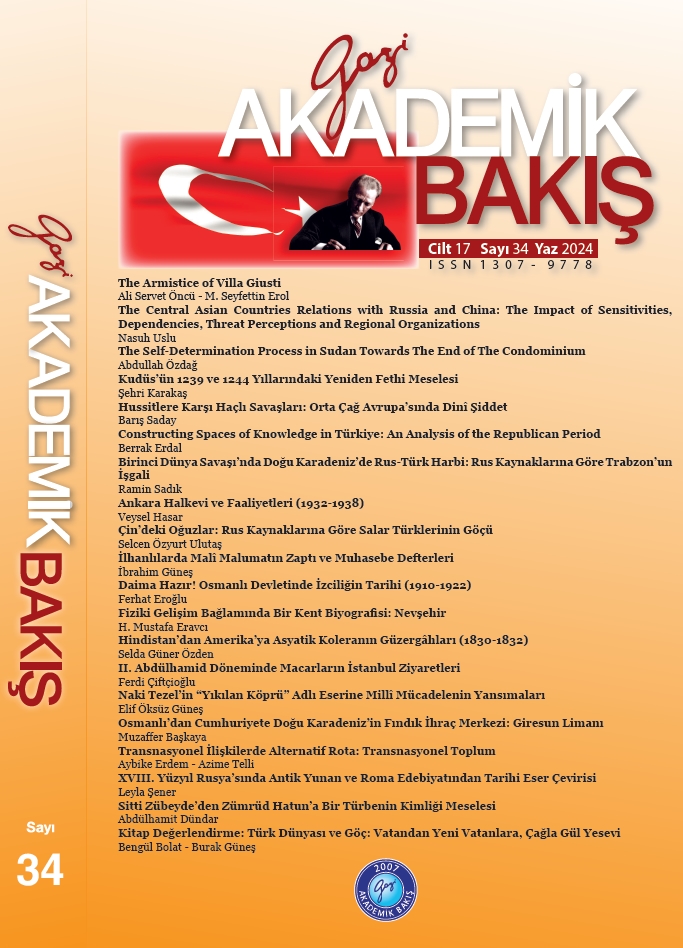Ankara Halkevi ve Faaliyetleri (1932-1938)
Ankara People’s House and Its Activities (1932-1938)
Author(s): Veysel HasarSubject(s): History, Cultural history, Political history, Social history, Interwar Period (1920 - 1939)
Published by: Gazi Akademik Bakış
Keywords: Atatürk; Ankara; People’s House; Modernization; Turkey;
Summary/Abstract: Republic of Turkiye administration understood very well how the Ottoman Empire disintegrated in the 19th century. Ataturk, who wanted to build a nation-state from the fragmented empire fragments, viewed the modernization process very critically. Therefore, after the victory of the Turkish War of Independence, another area of the struggle was determined as modernizing the country. In order to achieve this aim, revolutionary movements were initiated in many fields such as political, social, cultural, scientific and similar areas. It was a vital issue to convey the reforms to the people and to have them adopted. At this point, Ataturk deemed it necessary to open intermediary mechanisms to make the people adopt the reforms from the center to the periphery. With this idea, People’s House were first opened in 14 provinces, including Ankara People’s House, on February 19, 1932. Ankara People’s House carried out crucial activities within its sphere of influence to enlighten the public with its modest budget. This influential cultural institution has become a foundation where intellectuals and citizens come together and carry out scientific activities. In line with Atatürk’s principles, Ankara People’s House has made significant efforts to educate the citizens in order to make the people adopt the secular-modern state ideology and has carried out serious work in its field of duty to establish state-nation integration. The cultural institution, which hosted many local and foreign scientists and artists who are experts in their fields, supported Turkey’s modernization policies and struggle with its own resources. In addition, Ankara People’s House, which contributed to the free education of many successful students, helped these students to work in the state bureaucracy in the future. During the early Republic period, more than three quarters of Turkey’s population lived in rural areas. Ankara People’s House, which does not exclude rural areas from its field of interest, visited remote villages through the Peasantism Committee and it executed activities not only to increase the living standards of the citizens but also to reach the villages with state opportunities in the fields of health, education, culture, public works and production. In particular, health screening practices improved the public’s sanitary conditions and reduced epidemics. To sum up, Ankara People’s House provides many outstanding benefits services to Turkish modernization, literature, history, art and Turkish cultural life through its nine branches.
Journal: Gazi Akademik Bakış
- Issue Year: 17/2024
- Issue No: 34
- Page Range: 151-172
- Page Count: 22
- Language: Turkish

